Ninjutsu [忍術] is a Japanese art practiced by Ninjas, very popularly known in anime such as Naruto. Did you know that this art really existed? Are there still practitioners of the Ninja art?
In this article, we will see absolutely everything about Ninjutsu, its origin, curiosities, weapons used, not to mention the differences between real-life Ninjutsu and anime. To make navigation easier, we will leave a summary below:
Table of Content
What is Ninjutsu?
Ninjutsu is an art used by ninjas for espionage, sabotage, assassination, and other purposes. This art requires a lot of wisdom in various other martial arts, discipline, good management, and discretion.
The word Ninjutsu [忍術] comes from the ideogram [忍] which means resistance, patience, and self-restraint, along with the ideogram [術] which means art, techniques, skills, means, and tricks. Ninja [忍者] is the person trained in Ninjutsu.
Ninjutsu can also be called ninpo [忍法] which literally means ninja arts. Where the ideogram [法] means method, law, rule, principle, model, and system. The ninjas have a code of conduct called Ninpoh Ikkan.

The Fundamentals of Ninjutsu
Ninjutsu is a martial art with the objective of putting the body, mind and spirit together, in order to develop the human being and leave him in harmony with nature, defeating his defects and improving his abilities.
The ninjas developed a fighting technique or a martial science full of strategies capable of facing all types of melee combat or with weapons, whether on the ground, at a distance, using firearms or causing twists in the opponent.
The Ninja also needs to learn the art of disguise, manipulation of the human body, knowing the vital points and strategies for self-defense, self-sufficiency in fighting and psychological manipulation of the enemy.

Many ninjas need spiritual refinement, use of breathing techniques, meditation and control of vital and mental energy. They also need to overcome their emotional and mental vulnerabilities.
Many Ninjas practice scuba diving, mountaineering, survival, target shooting and others. This martial art is so famous in the world that even the FBI, SWAT and many other soldiers know how to use ninjutsu.
Virtues, rules, secrets and ninja norms
The practitioner of ninjutsu needs to correctly copy all the techniques of their master, only then beginning to develop new techniques, achieving maximum perfection and performing all techniques automatically without thinking. These stages are divided into 3 and called su, ha, and ri.
Ninjas have rules that they never look down on an opponent, never underestimate their abilities and don't be afraid to confront them because of their reputation. He must also never hesitate when taking action.
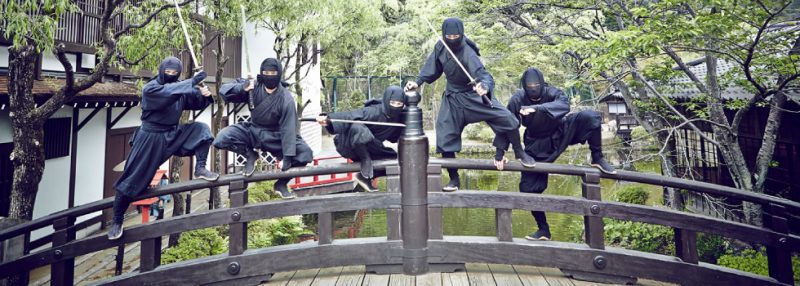
A ninja should never question his lack of preparation, let alone be afraid. He must never fear the enemy nor act with a lack of confidence. You should never be afraid of the enemy's physical appearance or strength.
Ninjas follow 7 virtues which are:
- GI - Fair decision, attitude and truth;
- YU - Bravery and heroic urge;
- JIN - Love for the universe and benevolence for humanity;
- REI - Balanced and fair behavior;
- MAKOTO - Total sincerity;
- MERYO - Honor and Glory;
- CHUGI - Loyalty and devotion;
Ninjas have rules that can even be recorded in a Dojo. See some below:
- Do not show or say anything in the face of danger;
- Forget your ego, be patient and don't fear death;
- Maintain an indomitable spirit in the face of strong enemies;
- Serve and protect the master as if they were your parents;
- Vices dissipate your proficiency;
- Destroy the power of the enemy, but leave his life;
- Do not teach others without the master's permission;
- Forget all sadness, grudges, anger and hatred;
- Be worthy, do not deviate from your path of good;
- Do not let ambition and lust take over your soul;
- Focus all your time and mind on the practice of Budo Taijutsu;
- We must accept sorrows, hatreds or hardships as a blessing from mother nature;
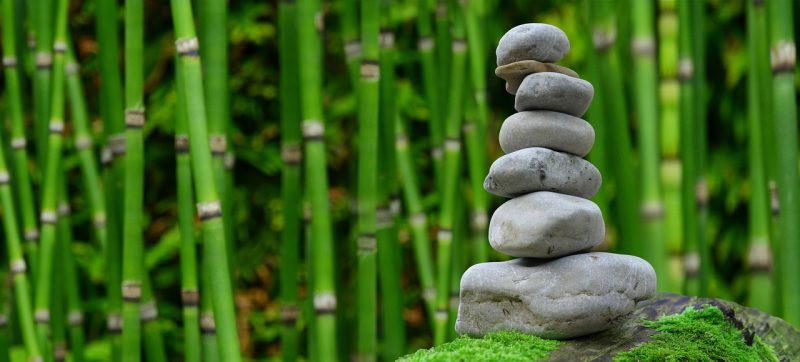
The Ninjas also have 8 fighting secrets called "Ninja no Hachimon".
- NINJA NO KIAI - The explosive expression of spirit and internal energy;
- NINJA NO TAIJUTSU - The study and practice of body techniques;
- NINJA NO KENPO - Study of sword techniques;
- NINJA NO SOOJUTSU - Study of methods using spears and pointed objects;
- NINJA NO SHURIKEN - The art of throwing darts, knives, and throwing weapons in the shape of a star;
- NINJA NO KAJUTSU - The art of using fire as an ally;
- NINJA NO UGEI - The art of deceiving and misleading the opponent;
- NINJA NO KYOMON - The study of religions, medicine, philosophy, meditation, history, mathematics, chemistry, physics, and psychology;
History and Origin of Ninjutsu
Ninjutsu dates back more than 900 years, in a historical context in which Samurai dominated Japan. He was born when Tibetan monks spread to various countries in Asia in order to practice terrorism, espionage and resistance against Manchu invasions of China.
During the Chin dynasty the temples were destroyed and the monks took refuge in other countries like Japan. These monks gave rise to various martial arts and one of these was Ninjustu.
The monks had contact with ronin, who were masterless samurai who no longer followed the code of conduct. Over the years, those who became ninjas began to work as mercenaries.
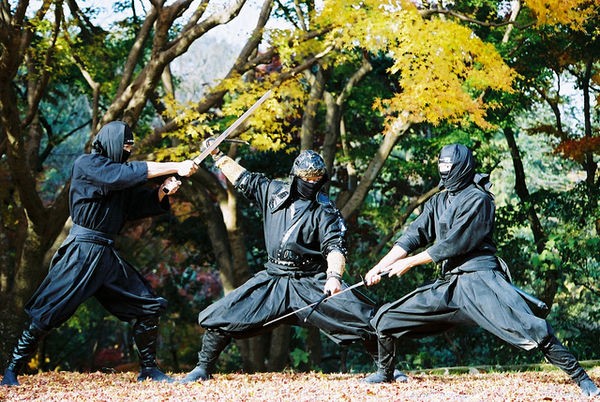
Even the Japanese government used ninjas as spies until the end of World War II. Nowadays the art is used as self defense or by the army of some countries, due to its agility in disarmament and its techniques in attack, defense and immobilization.
From its beginnings, ninjutsu was naturally practiced by children, young people, old people and women. In the West ninjutsu was taken up by men Doron Navon and Stephen Hayes around 1970.
Weapons Used in Ninjutsu
In Ninjutsu there are various types of weapons that can be used in battles with your opponents. Many of these weapons are homemade tools like brooms, umbrellas, screwdrivers, pliers, and even a bedsheet.
In Ninjutsu, it doesn't matter what tool you use in battle, but rather who will be the winner of the fight, whether fairly or not; what matters is winning against the opponent. Ninjas are capable of using anything in battle to achieve victory.
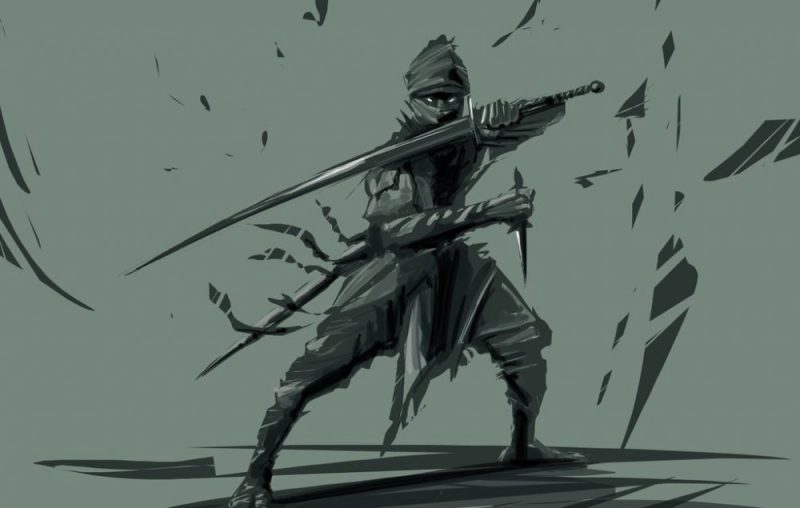
Many weapons that we are going to present below are associated with the Ninjas, but they are not meant to be exclusive weapons of the Ninjas, some are used by Samurai or used in other fighting styles, not to mention those that were just peasant tools.
- Boken - Sabre de madeira para treinos;
- Bō - Bastão longo de 1,8 metros;
- Fukiya - Blowgun
- Fukumi Bari - Small throwing needles, blown with the mouth;
- Hanbō - Bastão curto de 90 centímetros;
- Jitte - Utilizado para lutar contra espada;
- Kaginawa - Rope with a cross hook, used for climbing houses and walls;
- Kama yari - Bastão longo com foice;
- Kama - Small scythe, originally used for harvesting grain;
- Kemuridama - Black smoke grenade, explosive or blinding;
- Kodachi - A small sabre similar to a wakizashi, but without a guard, with a slightly longer and more curved handle;
- Kunai - Utensil similar to a sharp garden spade or trowel;
- Kusari-fundo - Chain with two weights at the ends;
- Kusarigama - A Kama with a chain and a metal weight;
- Kyoketsu Shoge - Similar to kusarigama, metal chain and bow;
- Musubinawa - Rope with a single hook, used for climbing;
- Naginata - Bastão com facão Alabarda;
- Orthos - Bastão com pontas de lâminas;
- Shaken - Throwing dart;
- Shikomi Zue - Wooden staff with camouflaged saber;
- Shinobi Kumade - Rope used for climbing, using a claw-shaped hook;
- Shinobi Zue - Bastão com corrente camuflada;
- Shinobigatana - curved saber;
- Shuriken - Throwing star
- Tanbō - Two small wooden sticks, for attack and defense;
- Tanto - Japanese knife;
- Te yari - Lança pequena com gancho;
- Tessen - Metal fan usually used by women;
- Tetsubishi - Pyramid-shaped clove, used in pursuit;
- Wakizashi - Curved saber, similar to the katana, but with a smaller blade;
- Yari - Lança com aproximadamente 2 metros;
- Yumi ya - Kyudo - Archery;
Naruto ninjutsu vs real life
The famous anime Naruto tries to accurately represent Ninjas and their art called Ninjutsu. Throughout the anime, there are several references to the powers used by the character that are called jutsu [術]. The word jutsu literally means art.
The ninjas in the anime naruto have absolutely nothing to do with real life ninjutsu. In the anime, ninjas are portrayed as humans with godlike powers rather than a stealthy person who kills opponents.
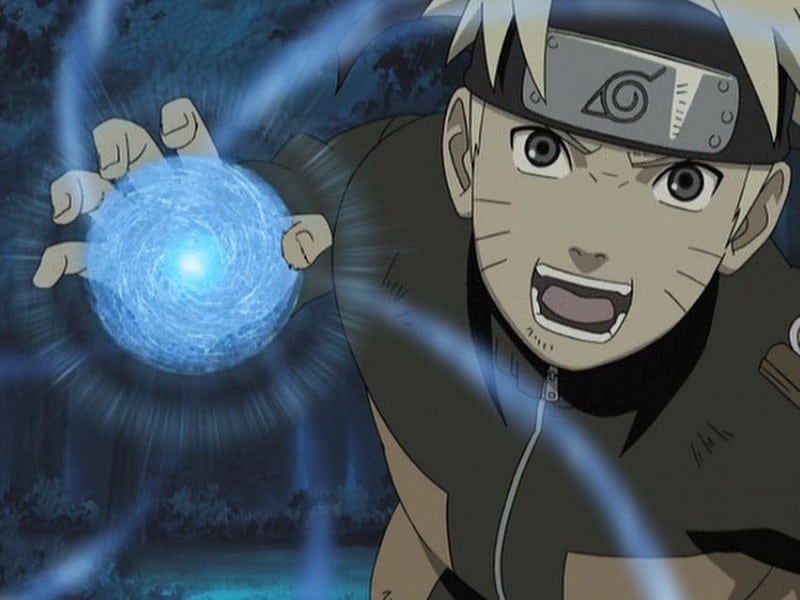
Real ninjas kill people all the time. Nobody finds out why he's good at it. They are known for leaving unexplained corpses everywhere inconspicuously, not blowing up mountains and making craters.
Ninjas need to wear clothes that can help them blend in with their surroundings, something that doesn't happen in the Naruto anime that uses bright, bold and flashy colors instead of a discreet black. Naruto's clothing only serves to show his location.
The anime features some Ninja weapons like Kunai, Shuriken and some swords. However, in the anime these weapons are just decorations and are rarely used for a powerful purpose, as they have supernatural powers.
What's the point of Naruto characters using shuriken and a bunch of other weapons if they always make mistakes? A good ninja must possess the ability to kill, play dead, assassinate, slaughter and dismember to the very end.
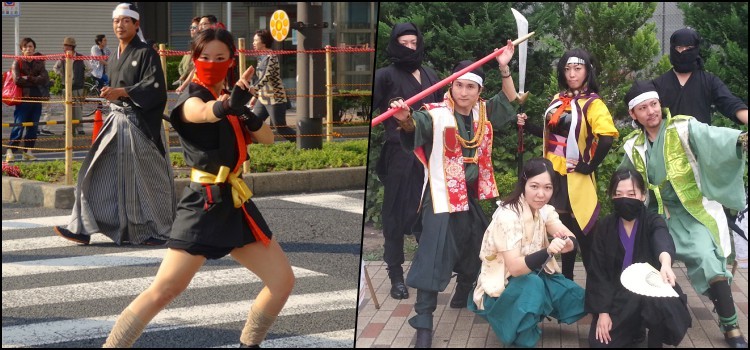
Naruto characters rarely kill anyone, they exist quite a bit before murder. Only once in a while does a villain commit murder to give the impression that they are evil.
Ninja Disciplines - Jūhakkei
Ninjutsu is a set of various disciplines and arts that ninjas study called juhakkei. Below we will briefly list these arts. I hope you enjoyed this article. If you liked it, share it!
- Bajutsu (Equestrian);
- Bōjutsu (Long Stick Art);
- Bōryaku (Military Strategy);
- Chi-mon (Geography);
- Chōhō (Espionage);
- Hensōjutsu (Art of Disguise and Camouflage);
- Intonjutsu (Art of Evasion);
- Kayakujutsu (Art of Explosives and Pyrotechnics);
- Kenjutsu (Art of the Sword);
- Kusarigamajutsu (Fight with Sickle with Chain);
- Naginatajutsu (Naginata Fighting);
- Seishin Teki Kyoko|Seishin-teki kyōyō (Spiritual Refinement);
- Shinobi-iri (Concealment);
- Shurikenjutsu (Shuriken Throwing);
- Sui-ren (Aquatic Training);
- Sōjutsu (Spear Art);
- Taijutsu (Unarmed Combat);
- Tenmon (Meteorology);
How to Learn to Learn Ninjutsu
On May 15, 1645, eighteen Portuguese-Brazilian leaders signed a pledge to fight against Dutch rule in northeastern Brazil. The movement integrated forces led by blacks, Indians and native Portuguese who used guerrilla warfare – ninja-style warfare – to counter Dutch material superiority.
What cannot be explained is that, since 1543, Portugal traded with Japan, buying Japanese products and slaves and selling them in its main colonies, such as Brazil. It is speculated that the Portuguese had contact with the Art of Ninja in this period and that it introduced a “ninja spirit” in the Brazilian roots, a determination to “never give up”.
This course aims to clarify the historical roots of the Art of Ninja and teach you a quick and effective method for you to recognize an authentic Ninjutsu dojo authorized by the Japanese Empire, without you running the risk of losing money, getting hurt or being deceived by the many “Fake- jutsu” spread in Brazil.
